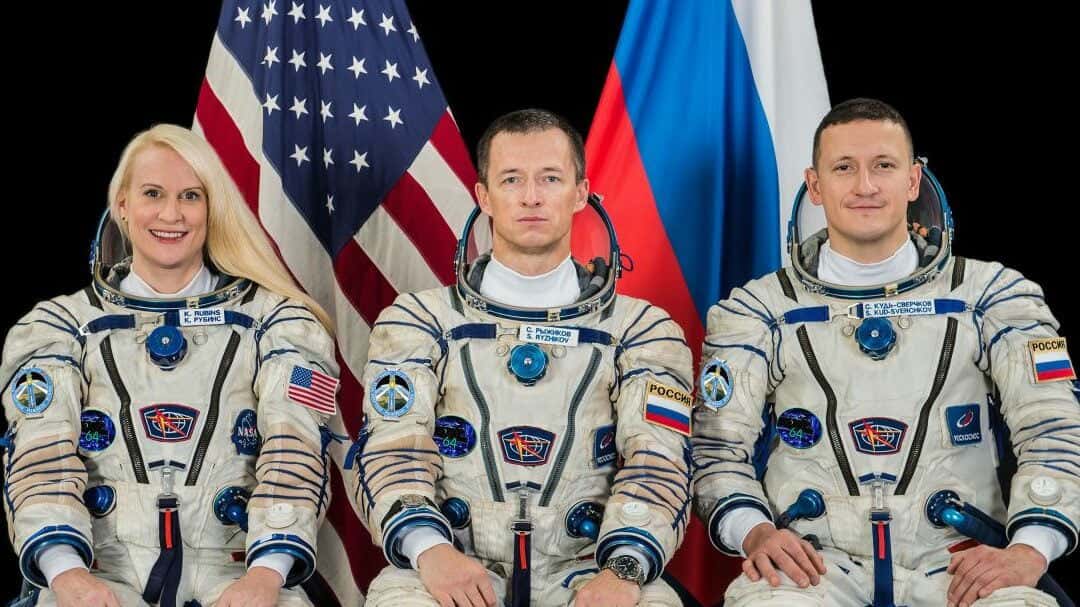On April 12, 1961, the Vostok spacecraft was launched from the Baikonur Cosmodrome, piloted by Russian astronaut Yuri Gagarin. Yuri Gagarin was a Soviet cosmonaut. According to the data from the Yuri Gagarin Cosmonaut Training Center, over one hundred pilot-astronauts have traveled to space. The center’s website lists a total of 121 individuals in the roster of astronauts from the USSR and the Russian Federation.
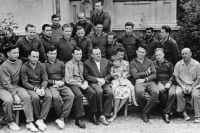
Which individuals were part of the inaugural Soviet cosmonaut squad?
In the early 1960s, the USSR established its first squad of cosmonauts. Following a rigorous selection process, only 29 out of 347 candidates successfully completed all stages of medical examination. Ultimately, the Mandate Commission chose only 20 applicants for spaceflight.
After three months since the issuance of Air Force Commander-in-Chief Directive No. 321141 on January 11, 1960, the first group of Soviet cosmonauts was officially enrolled with 12 flight candidates: Ivan Anikeev, Valery Bykovsky, Boris Volynov, Yuri Gagarin, Viktor Gorbatko, Vladimir Komarov, Alexei Leonov, Grigory Nelyubov, Andriyan Nikolaev, Pavel Popovich, German Titov, and Georgy Shonin. Shortly after, the first group of cosmonauts also included Evgeny Khrunov, Dmitry Zaikin, Valentin Filatiev, Pavel Belyaev, Mars Rafikov, Valentin Bondarenko, Valentin Varlamov, and Anatoly Kartashov. At the time of enrollment, the oldest member, Pavel Belyaev, was 34 years old, while the youngest, Valentin Bondarenko, was 23 years old.
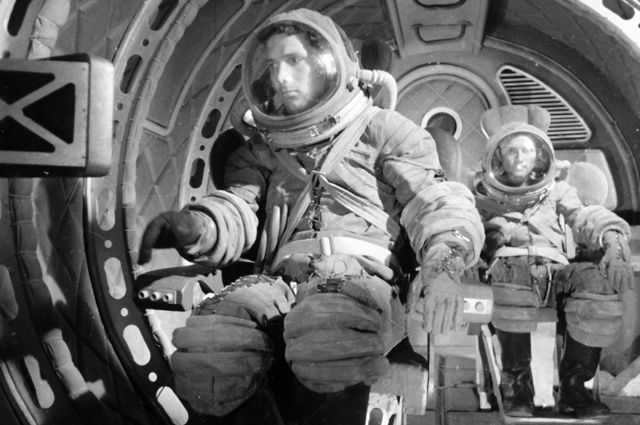
On the 25th of January, 1961, all the members of the group were officially recruited as cosmonauts by the order of the Air Force Commander-in-Chief ¹21. The squadron’s commander was Yuri Gagarin, with German Titov serving as his understudy and Grigory Nelyubov as the backup cosmonaut who unfortunately never had the opportunity to fly into space.
What was the number of astronauts in the USSR?
Between April 12, 1961 and the disintegration of the Soviet Union, a total of 72 astronauts embarked on space missions. Each of them was honored with the prestigious title of “Pilot-Cosmonaut of the USSR” and presented with a badge.
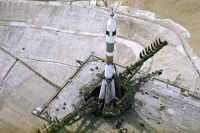
Yuri Gagarin was the first person to be honored with such a title. Two astronauts from the list of recipients – Georgy Dobrovolsky and Viktor Patsayev – were posthumously awarded the title. They both tragically lost their lives during their inaugural space mission.
The youngest astronaut to receive this prestigious title was German Titov, who was just 25 years old at the time. On the other hand, the oldest recipient was Lev Demin, who became a pilot-astronaut of the USSR at the age of 48. The most recent individual to be bestowed with this title was cosmonaut Toktar Aubakirov, who returned from his maiden space voyage on October 10, 1991, a mere two months before the dissolution of the Soviet Union.
From 1979 onwards, the numbering of badges given to cosmonauts changed. Previously, the number on the badge corresponded to the order in which they made their first flight. However, this order was disrupted in 1980 due to the introduction of short-term expeditions to orbital stations in addition to the main long-term expeditions. As a result, the honorary title was often given to the participants of the short-term expeditions before the main crew, who had launched earlier, returned to Earth.
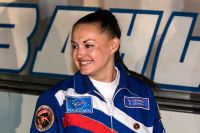
What is the number of pilot-cosmonauts in Russia?
The Russian Federation established the honorary title “Pilot-Cosmonaut of the Russian Federation” on March 20, 1992. This title is awarded to all Russian cosmonauts who have completed space missions. Since 1992, 49 cosmonauts have received this title, including 47 men and two women (Elena Kondakova and Elena Serova).
Starting from January 1, 2011, a unified team of astronauts has been established at the Yuri Gagarin Cosmonaut Training Center under the directive of the state corporation “Roscosmos”. As of the beginning of April 2019, the center has confirmed that there are currently 25 active members in the astronaut squad. Additionally, there are eight candidates who are currently undergoing general space training as part of the 2018 intake. The current candidates for astronauts include Konstantin Borisov, Alexander Gorbunov, Alexander Grebenkin, Alexei Zubritsky, Sergey Mikaev, Kirill Peskov, Oleg Platonov, and Yevgeny Prokopiev.
Soviet cosmonauts: their names and achievements
The story began with the establishment of the inaugural group of Soviet Union cosmonauts in 1960, led by Yuri Gagarin. Over time, the team expanded to include other professionals in the field of spaceflight, including not only cosmonauts, but also doctors and engineers.
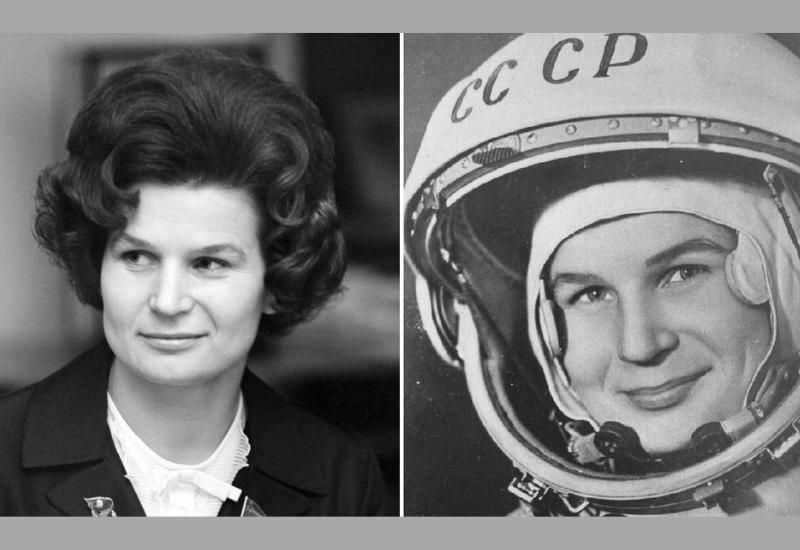
To prevent causing anxiety for her parents, Valentina informed them that she would be participating in a parachuting competition. It was by chance that they discovered the truth when they happened to hear about her spaceflight on the news!
Elena Kondakova
Kondakova’s accomplishments include two successful space missions. Her first voyage took place in October 1994 aboard the spacecraft “Soyuz TM-20.” During this mission, Kondakova set a new record for the longest duration of stay in space without atmospheric pressure – a remarkable 169 days, 5 hours, and 35 seconds. As a result of her impressive achievements, she was honored with the prestigious title of Hero of the Russian Federation.
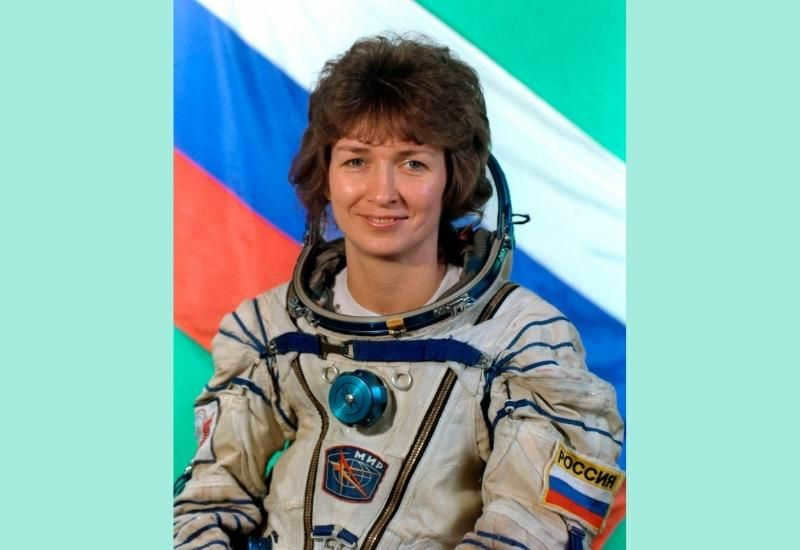
Elena Serova
Elena Serova made history as the first Russian woman to embark on a journey to the International Space Station (ISS) aboard the Soyuz TMA-14M spacecraft. Her mission was to explore and conquer the vastness of the Universe. She departed in September 2014 and safely returned in March 2015, spending a total of 169 days in outer space.
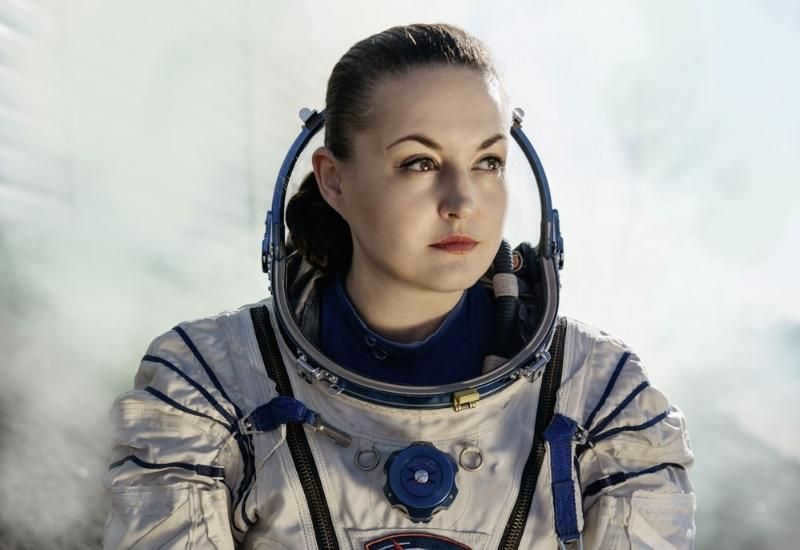
Svetlana Savitskaya
Svetlana Savitskaya has had the opportunity to journey into space not once, but twice. Her initial venture took place aboard the spacecraft “Soyuz T 7” and spanned from August 19th to August 27th in the year 1982. For her second voyage, Savitskaya was accompanied by a crew of three individuals as they embarked on the Soyuz T 12.
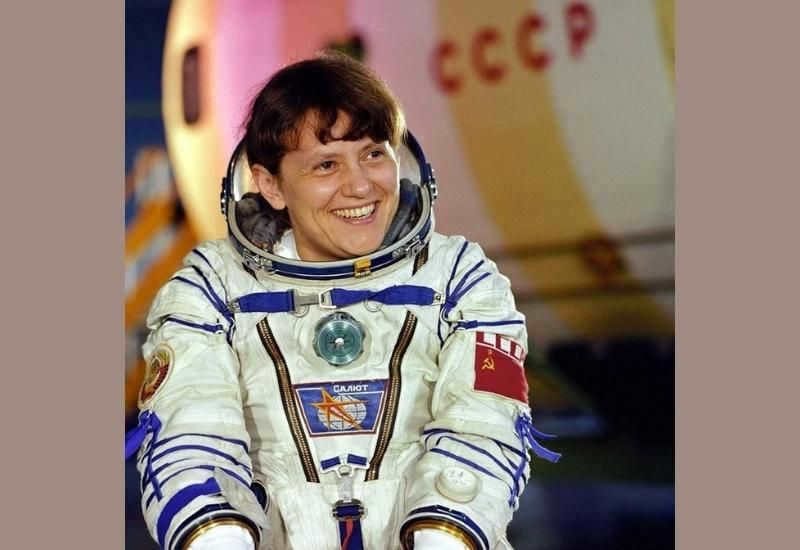
Yulia Peresild
Yulia Peresild is the world’s first actress-cosmonaut! The purpose of her flight was to carry out a highly ambitious film project – the shooting of the feature film “Challenge” aboard the International Space Station. This groundbreaking movie is the first of its kind to be filmed in actual outer space!
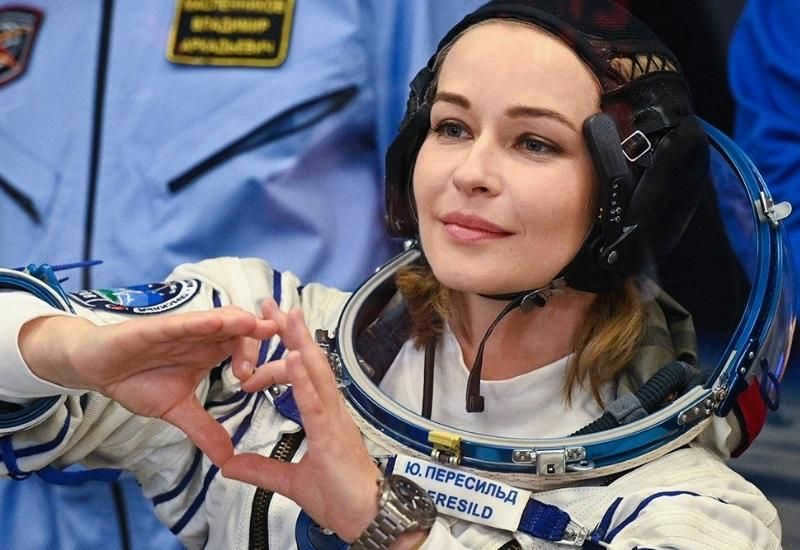

Yulia embarked on her space adventure alongside director Klim Shipenko and cosmonaut Anton Shkaplerov. The journey lasted for nearly a fortnight.
Russian cosmonauts and their notable accomplishments
Soviet cosmonauts have achieved worldwide recognition, with names like Yuri Gagarin, Valentina Tereshkova, and Alexei Leonov being well-known. However, it is important to acknowledge the significant contributions made by Russian pilots, doctors, and engineers in advancing national cosmonautics. They have undertaken numerous flights, conducted spacewalks, carried out studies and experiments, and contributed to scientific works in this field.
Among these remarkable individuals, Gennady Padalka holds the world record for the longest duration spent in space – a staggering 878 days and 11 hours!
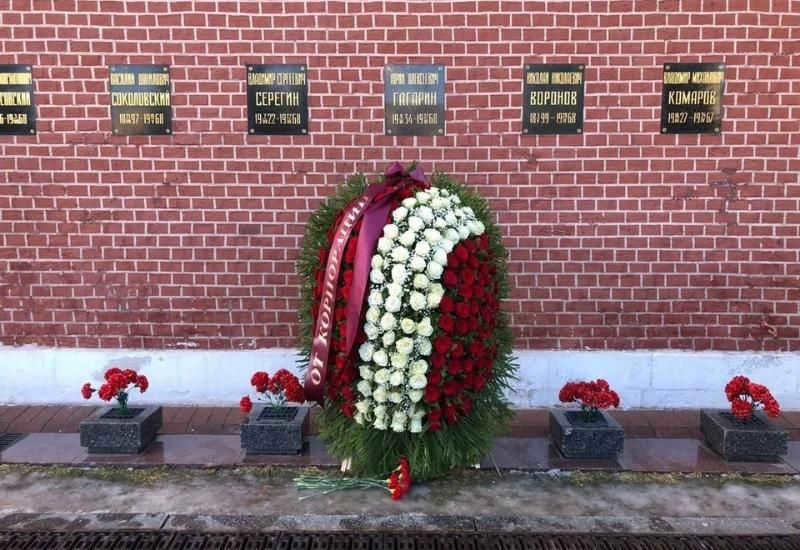
During the time of the Soviet Union, astronauts who lost their lives during a space mission were laid to rest at the Kremlin wall.
Throughout the entire course of human space exploration, a total of 930 individuals have been chosen as astronauts, with 828 of them being men and 102 being women. However, only 587 of these individuals have actually flown into space, ranging from 1 to 7 missions, while 236 have ventured beyond the Earth’s atmosphere!
The era of space exploration in human history commenced in 1961. On April 12, 1961, Yuri Alexeyevich Gagarin embarked on a space journey that significantly altered the course of world history. He became the first person to reach an unprecedented altitude. Prior to this monumental achievement, Soviet spacecraft had already made their way into space. In 1957, the first artificial satellite was launched into orbit around the Earth.
Russian astronauts
In 1991, the USSR fell apart. The primary “space legacy” was inherited by Russia, Ukraine, and Kazakhstan. Despite facing severe economic crises and frequent military conflicts, particularly in Russia, the progress of space programs remained uninterrupted. Many sources do not differentiate between Soviet and exclusively Russian cosmonauts in their lists. Nevertheless, Russian astronauts represent a new breed of cosmonauts who have contributed and continue to contribute to the advancement of spacecraft technology.
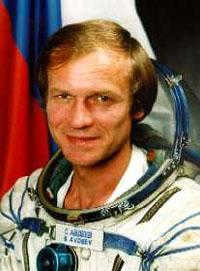
Between 1961 and 2014, a total of 248 missions were conducted from the Baikonur and Plesetsk cosmodromes. Within the period of 1991 to 2014, there were 91 launches. This means that more than one-third of all space launches from the former USSR sites occurred during Russia’s period of independence. Considering the significant expenses associated with space exploration programs, it is worth noting that this represents a substantial number.
Russia’s initial cosmonauts during Russia’s liberation period
The foremost mission of a spaceship involving a Russian national occurred from March to August 1992. The distinction was given to Alexander Yurievich Kaleri. Kaleri was born on May 13, 1965 in the city of Jurmala, Latvia. He has undertaken 5 space expeditions (from August 1996 to March 1997, April to May 2000, a collaborative mission with an American cosmonaut from October 2003 to April 2004, and from October 2010 to March 2011).
One of the notable Russian cosmonauts is Sergey Vasilievich Avdeev, who completed 3 space missions. The initial one occurred a few months after Kaleri’s first flight on July 17, 1992. Avdeev was born in Chapaevsk, a city with a symbolic name in the Kuibyshev region of the RSFSR, in 1956. His first mission concluded in February 1993. Additionally, this pilot-cosmonaut took part in joint missions with American astronauts from September 1995 to February 1996. His third and final mission was carried out alongside Gennady Padalko and Yuri Baturin, lasting from October 1997 to July 1998.
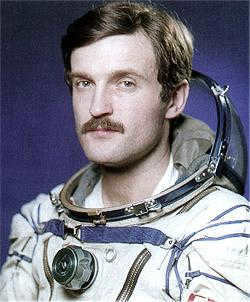
What is the process for selecting candidates to participate in space flights?
The selection process for candidates to participate in space flights involves several criteria that are evaluated by an expert commission, which includes astronauts. The commission specifically focuses on military pilots, who have already completed basic training and have the necessary physical stamina and coordination to operate in extreme situations. The commission also considers the candidate’s flight experience, including the altitudes at which they have flown. However, the most crucial criterion is the candidate’s health status at the time of selection, which must be in perfect condition.
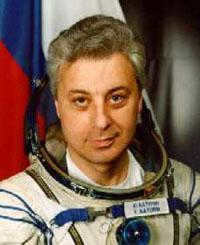
Following the initial screening process, potential candidates are enrolled in a specialized training program. The duration of this program varies depending on the timing of the next scheduled mission. Russian cosmonauts are known for their unwavering patriotism towards their country!
Current State of the Space Program
Russia continues to conduct space flights today, with a focus on building the necessary infrastructure and training facilities. The development of new spacecraft models is also underway, incorporating the latest scientific advancements. As of 2014, there are 47 active cosmonauts in Russia, including one woman. While not all of them will have the opportunity to go to space, they all participate in rigorous training programs in order to be prepared for potential missions. Their ultimate goal is to explore and conquer space, gaining a unique perspective of our planet.
Among the notable cosmonauts are Sergey Krikalev, Gennady Padalka, Elena Kondakova, and others.
Sergei Krikalev
Sergey Krikalev, the former director of the Gagarin Cosmonaut Training Center, is a distinguished individual who holds the prestigious titles of Hero of the Soviet Union and Hero of Russia. He is one of only four individuals to have been honored with both of these esteemed titles. Moreover, Krikalev holds the remarkable record for the longest cumulative time spent in space, having accumulated a total of 803 days over the course of six space missions.
Krikalev embarked on his inaugural spaceflight aboard the Soyuz TM-7 spacecraft on November 26, 1988. Following the return of the previous crew, Krikalev and his team continued their work on the space station. However, due to unforeseen circumstances, the arrival of the next group of cosmonauts was delayed. Consequently, Krikalev and the remaining crew members took it upon themselves to prepare the station for an unmanned flight. Eventually, they safely returned to Earth on April 27, 1989. In recognition of his exceptional contributions, Sergei Konstantinovich was bestowed with the title of Hero of the Soviet Union.
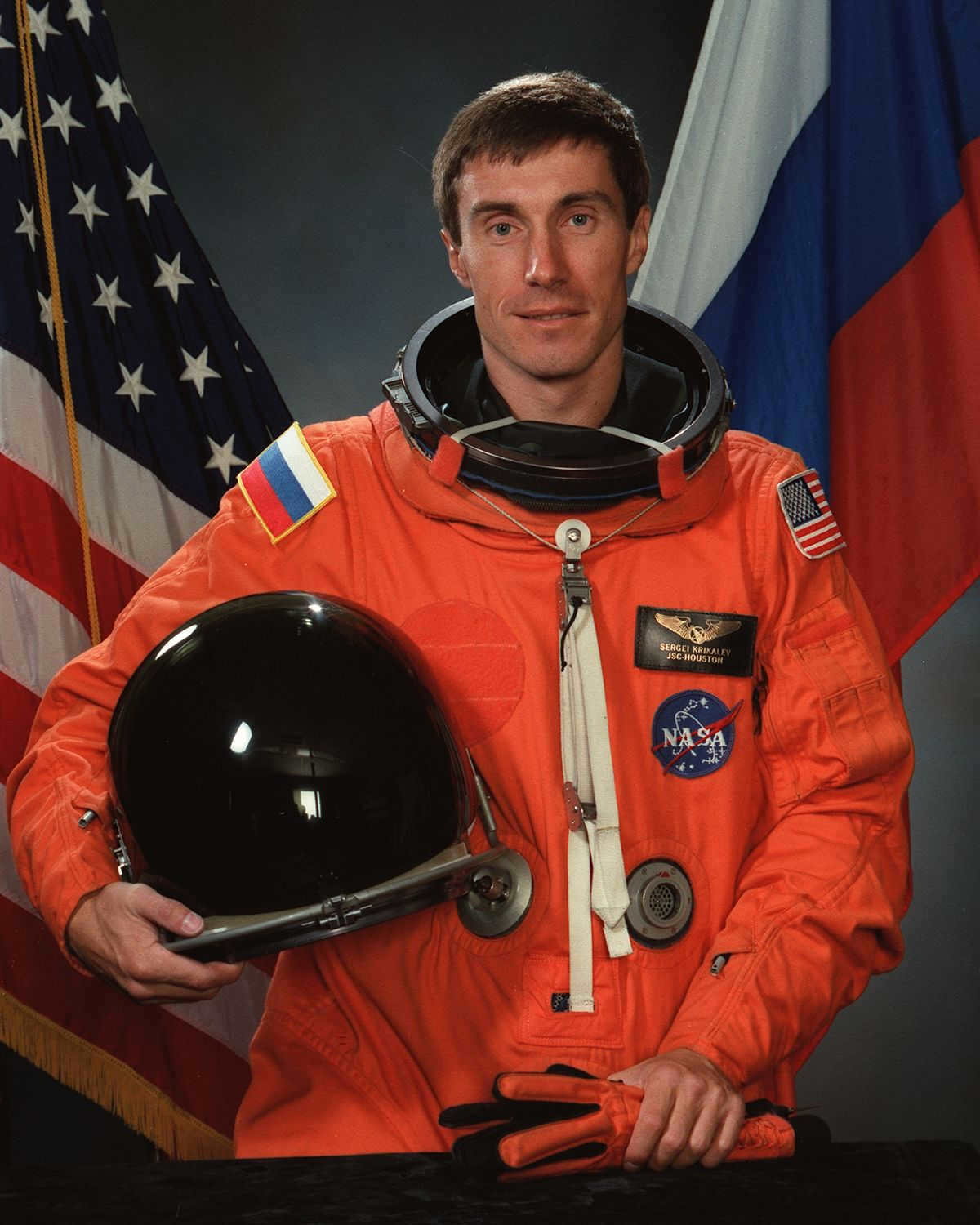
For the initial two missions, Sergei Konstantinovich spent over a year aboard the Mir space station and conducted a total of 7 spacewalks. He holds the record for the most space flights among Soviet and Russian cosmonauts, having completed a total of six missions.
Valery Polyakov
Valery Vladimirovich is one of four individuals who have been honored with both the titles of Hero of the Soviet Union and Hero of Russia. He also holds the world record for the longest single spaceflight, which lasted 437 days and 18 hours (1994-1995) aboard the orbital station “Mir”.
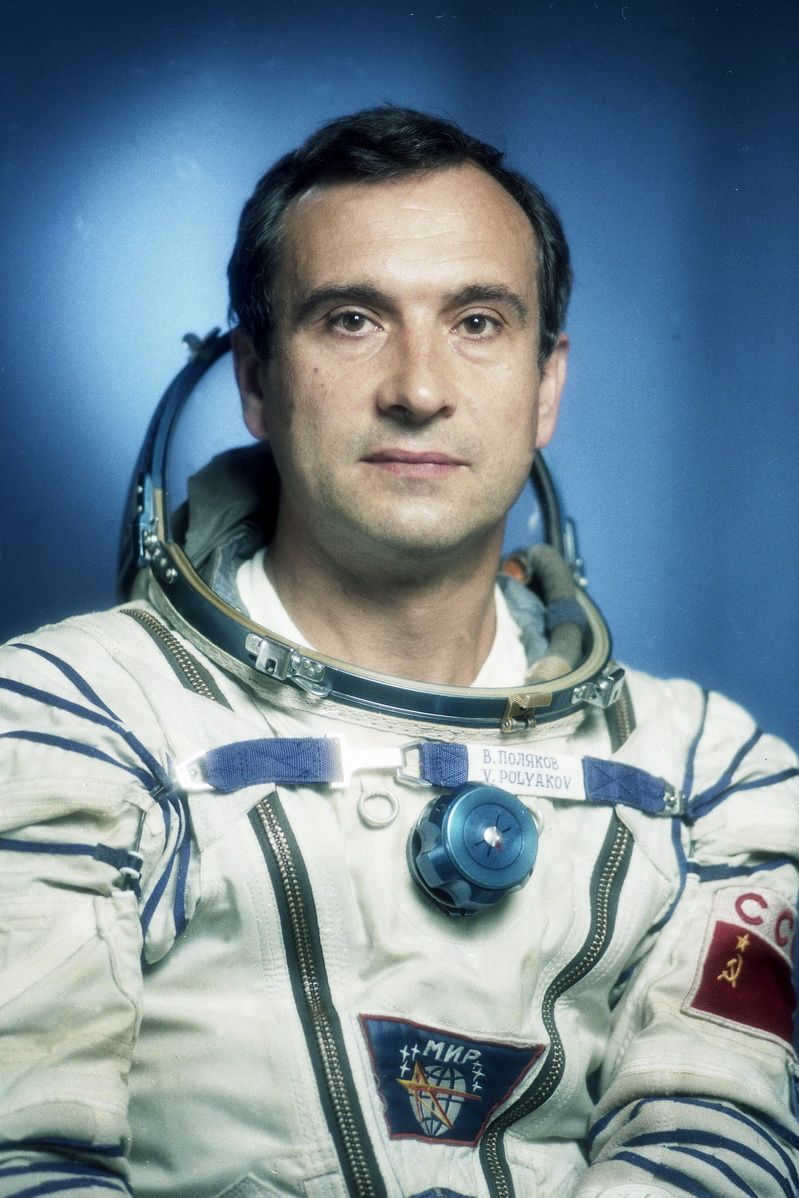
The cosmonaut was awarded the prestigious title of Hero of Russia for this achievement. Throughout his lifetime, he embarked on a total of two space missions, accumulating an impressive duration of 678 days, 16 hours, and 34 minutes spent in outer space. This remarkable feat places him as the fourth individual in history to have spent the most time in space, following Sergey Krikalev (803 days), Alexander Kaleri (769 days), and Sergey Avdeev (747 days).
Alexander Kaleri
Alexander Kaleri, the recipient of the Hero of the Russian Federation title, holds the second position in history for spending a total of 769 days in space, right after Sergey Krikalev. Throughout his career, Kaleri completed five space missions. It was Kaleri who stepped in for Krikalev in 1988 due to health reasons, while Krikalev himself received the Hero of the USSR award for his initial space voyage.
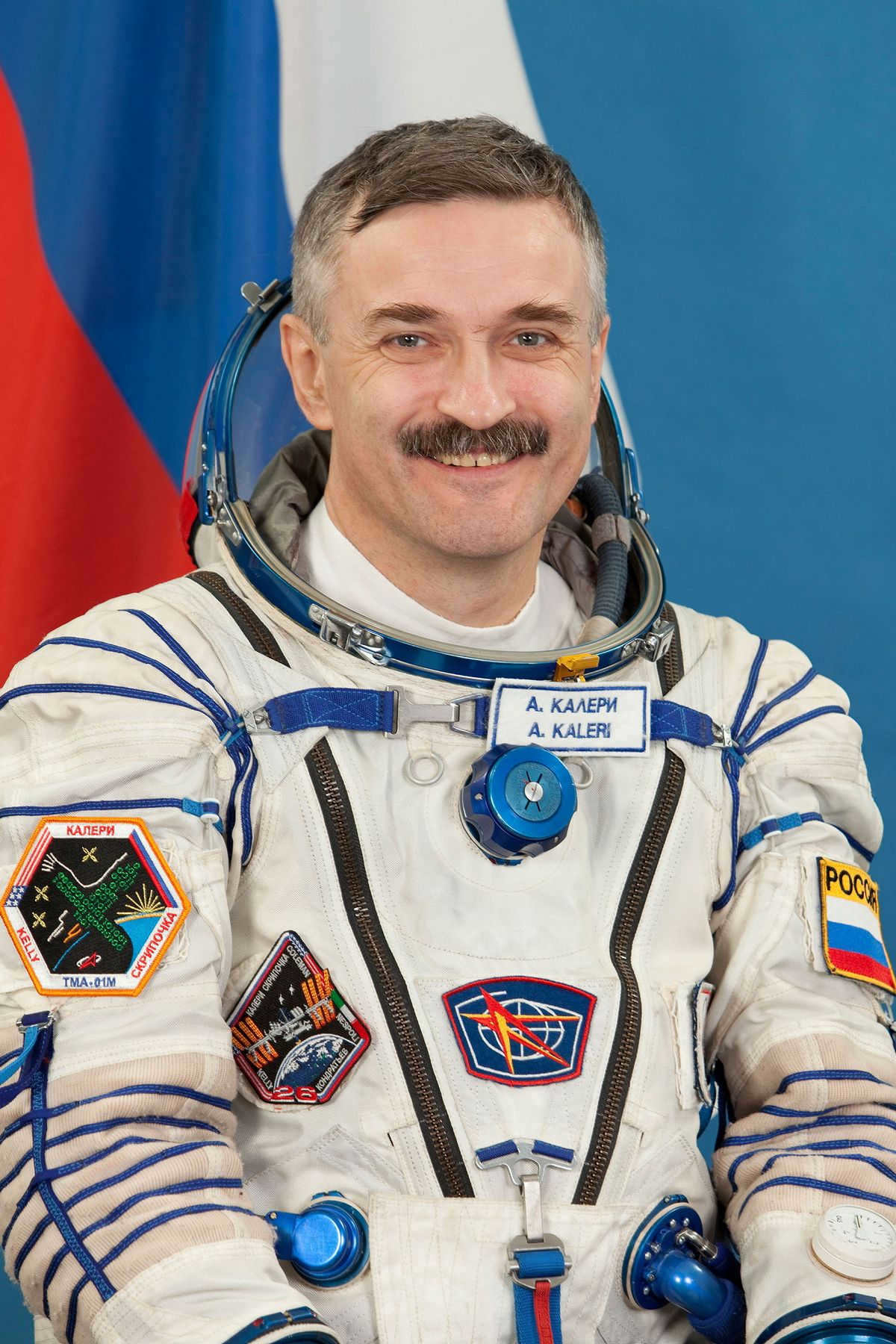
Gennady Padalka
Most individuals are familiar with this name due to the “protocol for encountering extraterrestrial beings”, which Gennady Padalka playfully acknowledged to reporters. Gennady Ivanovich is renowned for his sense of humor, as he actually slept on the ceiling of the space station during the 2012 expedition.
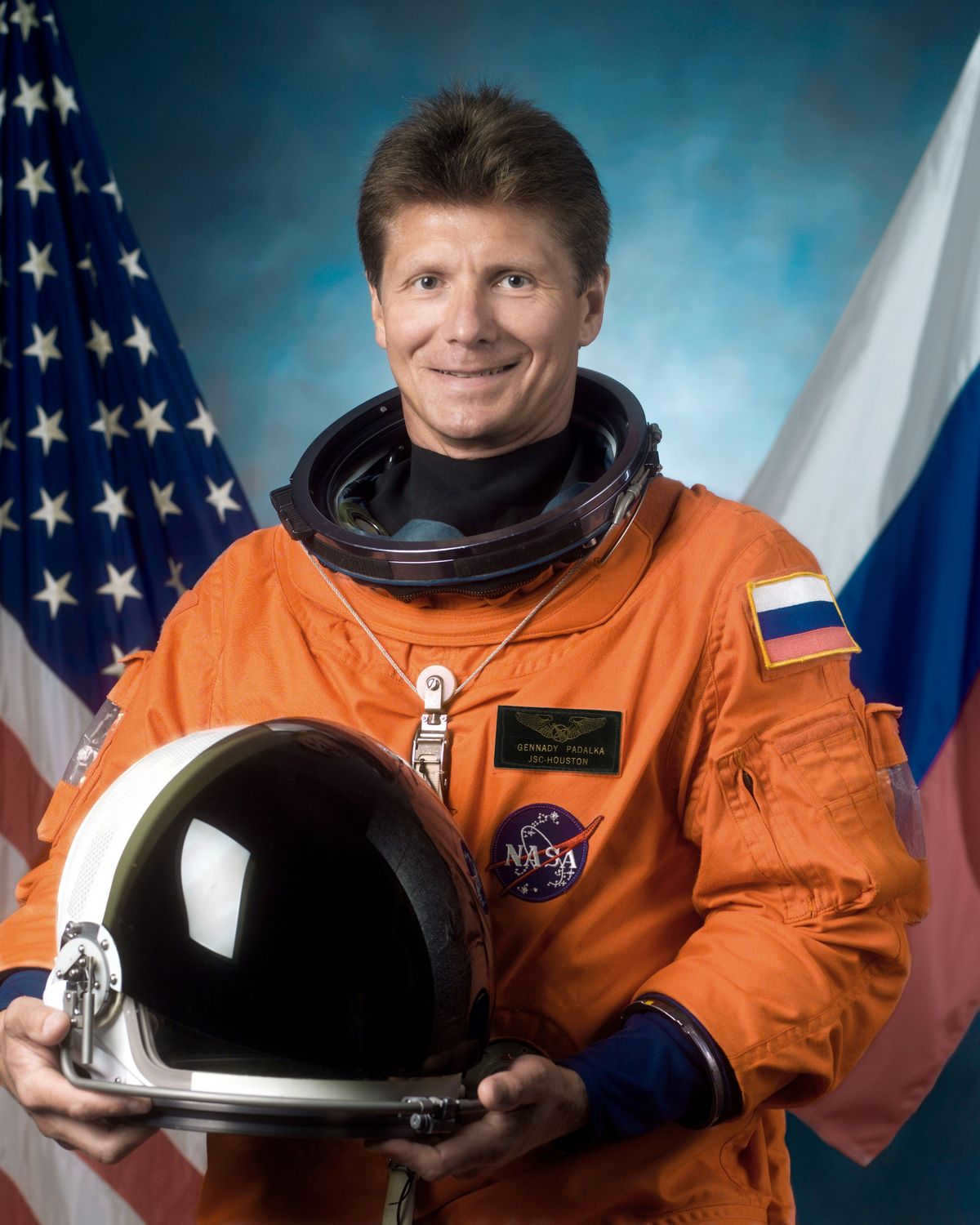
However, as a child, he never had aspirations of becoming an astronaut: “During that time, we were completely unaware of such a profession, so when we were asked what we wanted to be when we grew up, we all answered ‘Gagarin’.”
He pursued a career in aviation, but in 1987, fate brought him together with Alexei Leonov and that was when everything changed.
During his initial journey into space, Gennady Padalka spent 198 days in orbit and nearly 6 hours in outer space. Overall, he has embarked on three space missions, each lasting approximately six months, and has conducted eight spacewalks. He holds the esteemed title of Hero of the Russian Federation.
When we think back to the amazing accomplishment of Valentina Tereshkova, it is impossible not to recognize the significance of Elena Kondakova – the first female Russian astronaut (the third if we include the USSR). Moreover, Elena Vladimirovna holds the distinction of being the first woman to embark on a lengthy space journey. Her initial mission, which commenced on March 22, 1995, concluded a mere five months later. Overall, she completed two space missions, earning the esteemed title of Hero of Russia, before transitioning from astronautics to pursue a career in politics.
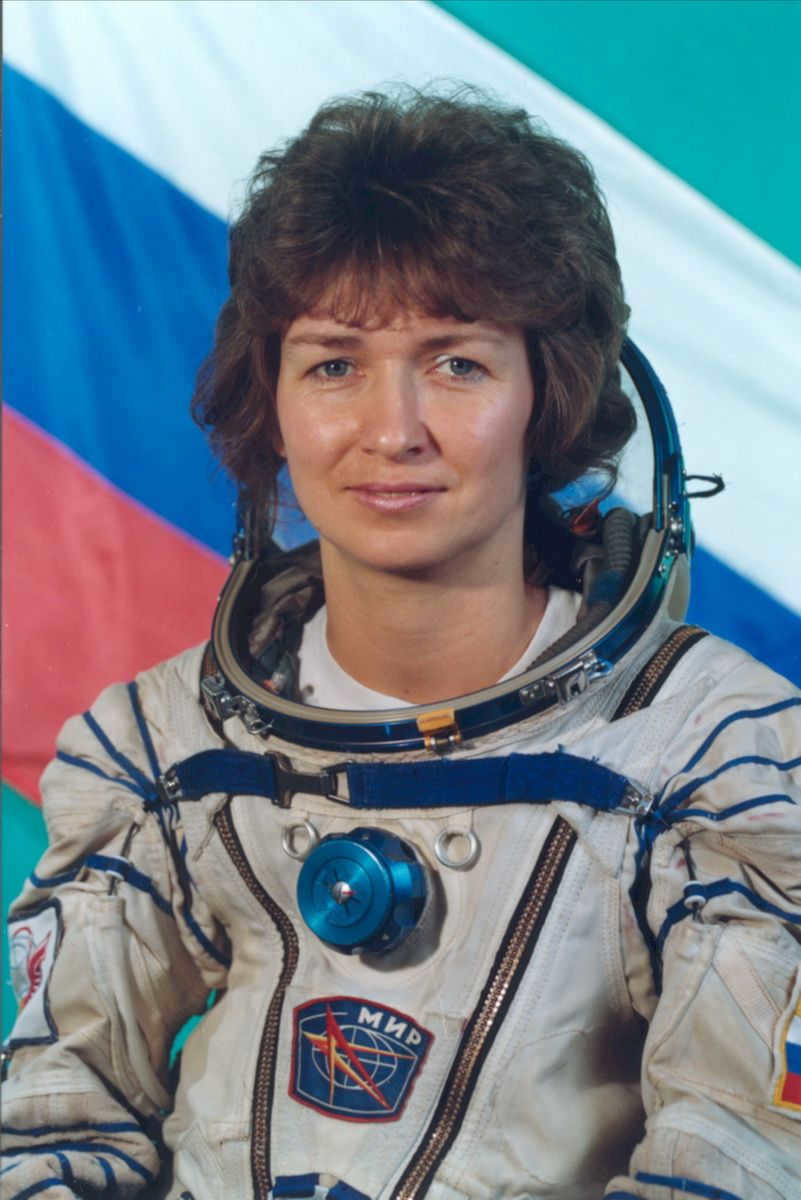
However, it is likely that this woman’s bravery runs in her veins. In 2011, she made the decision to step down from the United Russia party. Her resignation was a result of her discontent with the outcome of the party’s internal elections held in August of that year. She revealed, “Participants were given ballots with numbered candidates to vote for, but when the votes were tallied, it became apparent that there were more votes than there were people present. United Russia’s primaries are a politically impractical game of democracy. I understand that my statement marks the end of my political career…”
Since September 2016, Anna Kikina has been recognized as the sole female member of the Roscosmos cosmonaut team. On October 5, she will embark on a journey to the International Space Station (ISS) as part of the crew aboard the American Crew Dragon spacecraft. Throughout the history of space exploration, only five Russians have successfully overcome the Earth’s gravity. In this REN TV article, we will provide more information about each of these remarkable individuals.
Valentina Tereshkova
Valentina Tereshkova will always be remembered as the pioneering female cosmonaut. She holds the distinction of being the only woman in the world to have embarked on a solo space flight.
Tereshkova made her historic journey on June 16, 1963 aboard the spacecraft “Vostok-6”. At the time, she was a young 26-year-old. For nearly three days, she braved the unfamiliar and enigmatic realm of space all on her own. Throughout the mission, Valentina diligently maintained a flight log and captured photographs of the celestial horizon, which were later utilized in studying aerosol layers in the atmosphere. Witnesses who observed Tereshkova’s preparations and the subsequent launch of Vostok-6 into orbit remarked that everything proceeded seamlessly and with great precision.
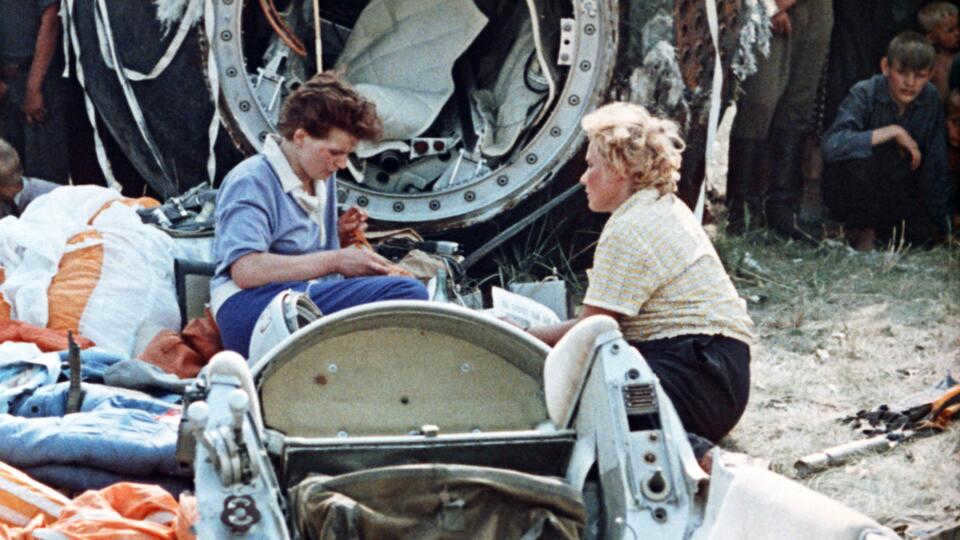
Photo: © Altai Krai. Valentina Tereshkova, the first female cosmonaut, is pictured on the left after her successful landing. TASS photochronicle
“I am delighted that my choice for the first female cosmonaut was correct,” admitted Lieutenant General Nikolai Kamanin, who was responsible for selecting and training cosmonauts.
After completing 48 orbits around the Earth, the spacecraft safely touched down in Altai. Valentina felt well upon landing and even disregarded the prohibition to exit the descent vehicle on her own.
Up until now, no other female cosmonaut has dared to venture into space alone. Valentina’s famous flight brought her worldwide recognition and adoration from the public. She was hailed as the greatest woman of the 20th century and had streets and schools named after her, as well as an oasis in Antarctica and a crater on the moon.
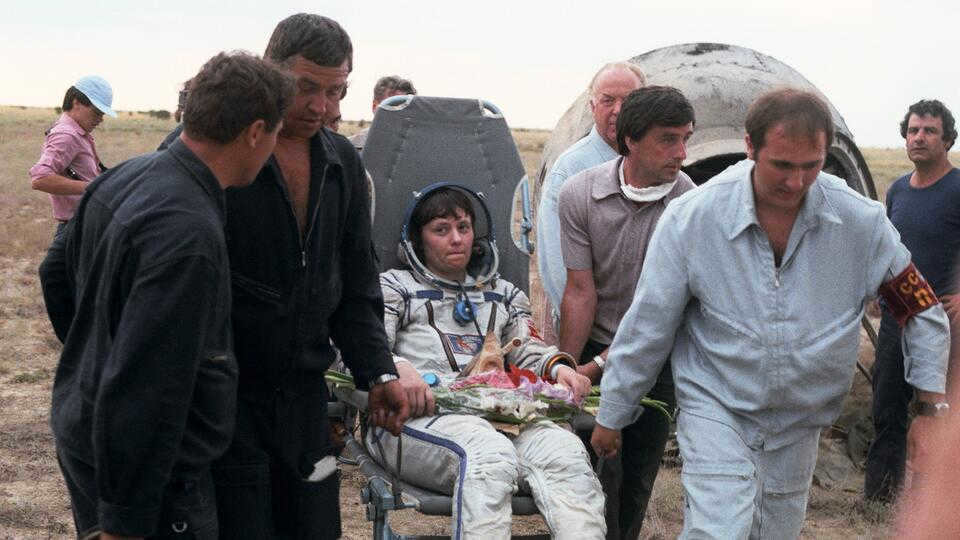
Photo: © Svetlana Savitskaya, the flight engineer of the Soyuz T-12 spacecraft after landing. The photo was taken by Valentin Kuzmin and Albert Pushkarev/TASS Photochronicle
Svetlana Savitskaya
Svetlana’s journey was a significant moment in the field of space exploration. She is recognized as the first woman in history to venture into outer space. In July 1984, she undertook her groundbreaking mission alongside Vladimir Dzhanibekov. The courageous cosmonauts spent a remarkable 3 hours and 35 minutes outside the spacecraft. During their time in space, they conducted experiments with a special handheld tool capable of welding, cutting, and soldering metal.
During the spacewalk, Savitskaya was under close observation from Earth. Everything was going exceptionally well: Svetlana demonstrated her true professionalism, remained absolutely composed, and even managed to exchange banter with her colleagues who remained on the station.
The crew of Soyuz T-12 safely returned to Earth on July 29. Svetlana Savitskaya was honored with the Order of Lenin and was bestowed with two Hero of the USSR stars.
“Everyone who witnessed the young Svetlana couldn’t help but be amazed by her composure, endurance, confidence, and most importantly, the grace with which she carried out such a challenging and responsible task. She became the first woman in space, the first to work with metal in Earth’s orbit – welding, melting, spraying, and cutting – all of which are integral to the construction of something new.” – historian Alexander Stepanov wrote.
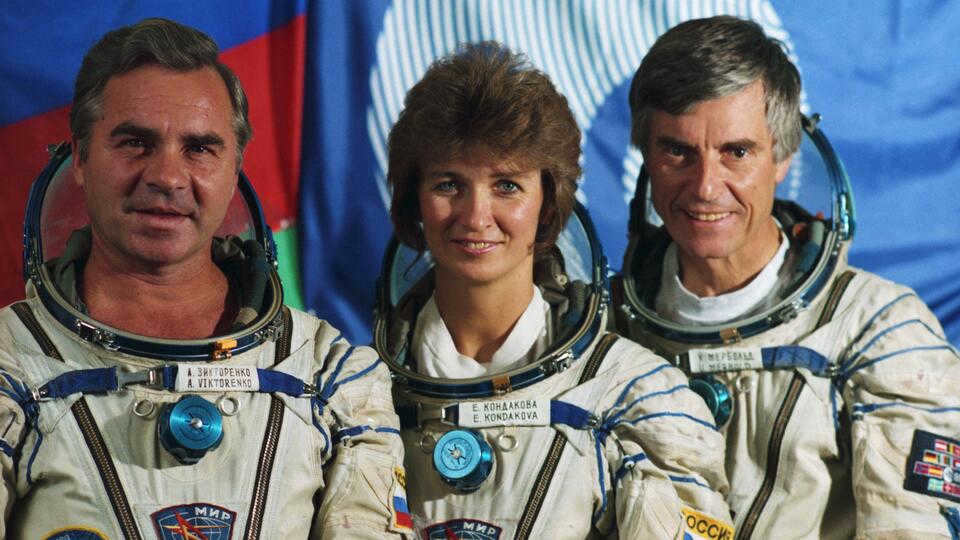
Elena Kondakova
Elena Kondakova holds the distinction of being the first woman in history to embark on a long-duration space voyage. Beginning in 1985, she dedicated herself to studying the Soyuz TM spacecraft, eventually becoming one of the candidates for an upcoming long-duration mission.
Elena’s inaugural space journey took place on October 4, 1994, aboard the Soyuz TM-20 spacecraft and the Mir orbital station. Serving as the flight engineer for the 17th main expedition, she was accompanied by cosmonaut Alexander Viktorenko and German astronaut Ulf Merbold. The mission lasted an impressive 169 days, 05 hours, 21 minutes, and 35 seconds.
From May 15 to May 24, 1997, Kondakova embarked on her second spaceflight as part of the crew of the shuttle Atlantis STS-84. This time, the mission lasted 9 days, 5 hours, 20 minutes, and 48 seconds.
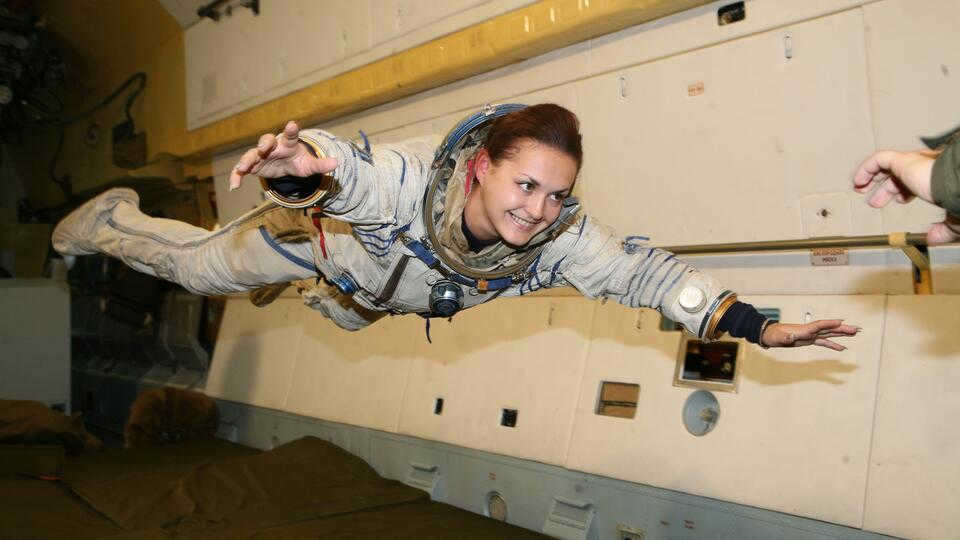
Elena Serova
Elena Serova is known as the first female astronaut in the modern history of Russia. On September 26, 2014, she embarked on a mission as the flight engineer of Soyuz TMA-14M alongside commander A.M. Samokutyaev and second flight engineer NASA astronaut B. Wilmore. The crew safely returned to Earth on March 12, 2015.
“I felt a sense of composure. Being the first flight engineer, I had specific tasks and responsibilities. We had to monitor the spacecraft’s systems. In the event of any abnormal situation, we had to quickly orient ourselves and understand how it was developing, take the necessary actions, and issue commands to ensure our safety and the success of our mission,” Serova reminisced about her first day in space.
The crew was assigned a variety of tasks. They conducted over 60 experiments in the fields of biotechnology, astrophysics, and chemistry.
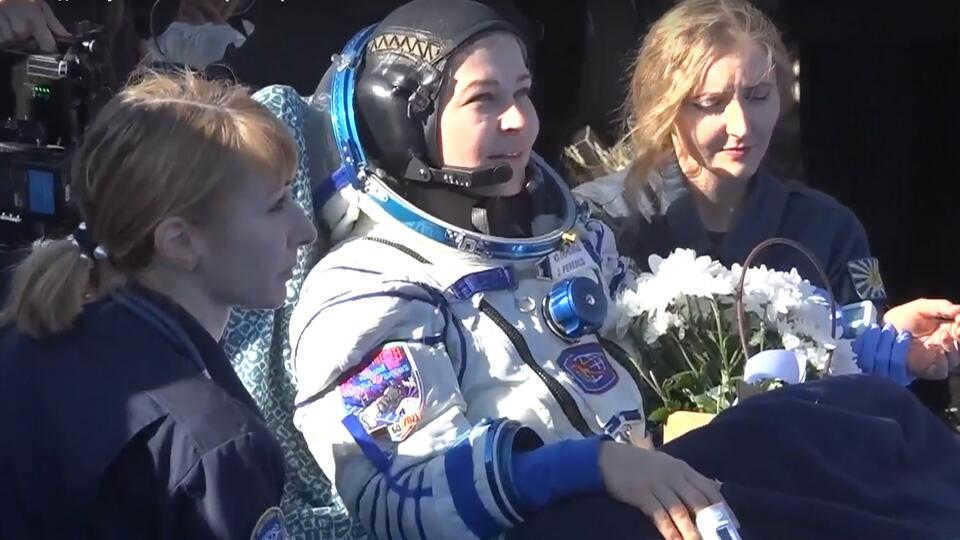
Yulia Peresild
The journey of Yulia Peresild on October 5, 2021 created a genuine buzz. It marked the first time an actress, rather than a trained professional, ventured into space. Accompanied by director Klim Shipenko and cosmonaut Anton Shkaplerov, she embarked on a mission to the ISS to film the movie “Challenge”. Peresild and Shipenko spent 12 days in space before returning to Earth on October 17.
Reflecting on her experience, the actress revealed that she felt melancholic on the day of their landing.
“It felt like 12 days was a long time, and when it came time to finish, I didn’t want to say goodbye. I do understand that it was a once-in-a-lifetime opportunity,” Peresild confessed.

